RANDOLPH
CALDECOTT
The Man Who Could Not Stop Drawing
Leonard S. Marcus



The author and publisher have provided this e-book to you for your personal use only. You may not make this e-book publicly available in any way. Copyright infringement is against the law. If you believe the copy of this e-book you are reading infringes on the authors copyright, please notify the publisher at: http://us.macmillanusa.com/piracy.
Farrar Straus Giroux Books for Young Readers
175 Fifth Avenue, New York 10010
Text copyright 2013 by Leonard S. Marcus
All rights reserved
Color separations by Bright Arts (H.K.) Ltd.
Printed in China by South China Printing Co. Ltd., Dongguan City, Guangdong Province
Designed by Roberta Pressel
First edition, 2013
13579108642
mackids.com
Library of Congress Cataloging-in-Publication Data
Marcus, Leonard S., 1950
Randolph Caldecott : the man who could not stop drawing / Leonard S.
Marcus. First edition.
pages cm
ISBN 978-0-374-31025-7 (hardcover)
1. Caldecott, Randolph, 18461886Juvenile literature.
2. IllustratorsEnglandBiographyJuvenile literature.I. Title.
NC978.5.C3M37 2013
741.642092dc23
[B]
2012050406
All images are by Randolph Caldecott unless otherwise noted.
We are grateful for permission to reprint the following images: Caldecott V & A Images / Victoria & Albert Museum.
Farrar Straus Giroux Books for Young Readers may be purchased for business or promotional use. For information on bulk purchases please contact Macmillan Corporate and Premium Sales Department at (800) 221-7945 x5442 or by email at .
eISBN: 9781466852907
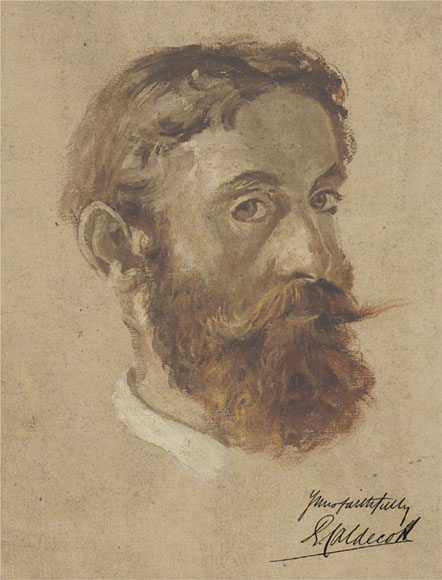
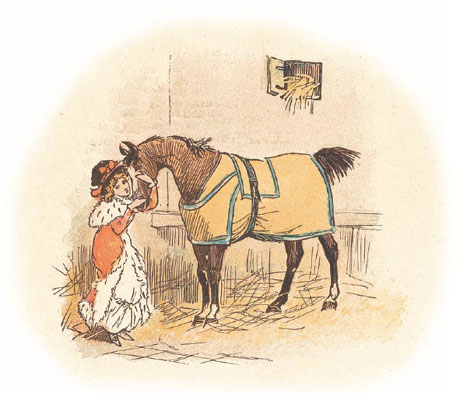
 wo swans at the waters edge trade bewildered glances when they notice a little frog poking his head out of the river. The frog is clutching a papera letter it would seemwhich he reads with a look of total absorption.
wo swans at the waters edge trade bewildered glances when they notice a little frog poking his head out of the river. The frog is clutching a papera letter it would seemwhich he reads with a look of total absorption.
The artist who sketched this delightful scene arranged matters so that the date on the frogs paper13 Dec 1874would be clearly visible to the young child receiving the picture in the mail. It was Christmastime, and this was Randolph Caldecotts response to a holiday gift containing a six-year-olds In his accompanying message, Caldecott thanked the young artist, then added these words of encouragement: I hope you will go on trying and learning to draw. There are many beautiful things waiting to be drawn. Animals and flowers oh! such a manyand a few people. It was a good wish for a talented six-year-old and one that Caldecott himself might have been glad for as a boy making his own first pictures.
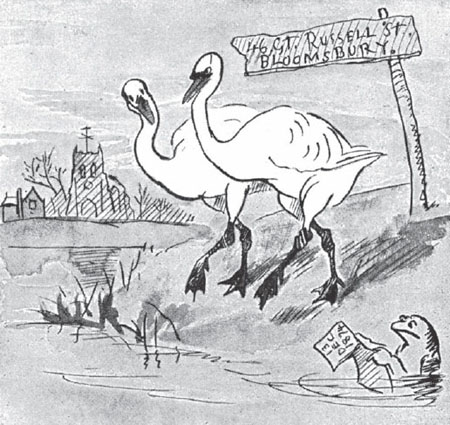
R ANDOLPH C ALDECOTT was born, the third of John and Mary Caldecotts seven children, on March 22, 1846, in Chester, England, a walled fortress town built by the Romans around A.D. 70. Little is known about his parents or his early family life. The census of 1851 lists John, age thirty-eight, as a In all likelihood he was both. The Caldecotts lived in rooms on two floors above Johns shop, together with two house servants and an apprentice who helped with the hat business.
Illness visited the Caldecotts often, although probably no more often than it did any of their neighbors. A son named William died at age two, only months after Randolph was born. The familys second daughter, Elizabeth, survived just six weeks during his third year. Then the childrens mother, Mary Dinah Caldecott, died when Randolph was six. That same year he began to draw and to make animal figures out of wood and clay. As a boy, Caldecott himself suffered from rheumatic fever, a disease that permanently damaged his heart. Even so, he loved sports and exploring the outdoors, and rarely let his frail health stand in the way of a good time.
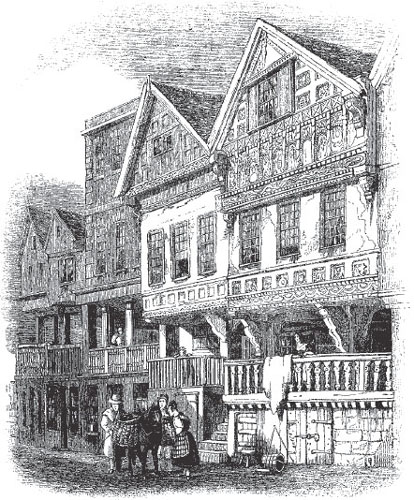
Watergate Street, Chester (artist unknown, 1850). The Caldecotts lived on nearby Bridge Street, which looked much like this.
A small building attached to Chester Cathedral housed the Kings School, which Caldecott attended as one of fewer than twenty students. A single teacher, a Mr. James Harris, taught all the lessons, which included the study of English grammar and the classical Roman poets read in the original Latin. Caldecott received high marks despite not being and preferring instead to spend most of his leisure time in wandering in the country round, a friend later recalled. One of his old boyhood schoolbooks shows that Caldecott sometimes let his mind wander while in class: the future artist had freely doodled in the margins.

Chester Cathedral (G. Prichard, 1850)
Tall, lanky, and good-looking, with blue-gray eyes and light brown hair that occasionally stood on end, he had a ready smile and easy-going manner and enjoyed poking fun at himself. His schoolmates chose him as their Head Boy, an honor roughly equivalent to student body president. He completed his formal education at fourteen, the usual age for boys given any schooling in a time when education was considered a luxury. Then, in 1861, with some prodding from his practical-minded father, he accepted a job as a clerk at the Whitchurch and Ellesmere Bank, in the nearby market town of Whitchurch, Shropshire. That year, Caldecott turned fifteen.
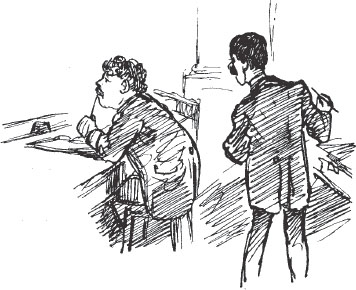
A bank clerkship was a highly desirable introduction to the world of work. It was a hard job to come byJohn Caldecott most likely had to pay the bank something in return for hiring his son. The job paid well and held great promise for the future. In making these arrangements, Caldecotts father doubtless wished to provide his physically fragile son with a steady, dependable means of support.
Whatever his own thoughts about this, young Randolph made the best of his situation, taking up lodging with a farm couple two miles from town and making friends with his fellow clerks. For transportation, he had a dogcarta lightweight horse-drawn vehiclewhich he raced to town and back each day and made further use of for occasional business calls at the homes of the banks far-flung customers. To his pleasure, he soon realized that the workload of a Whitchurch bank clerk left him with plenty of for hunting, fishing, riding, hikingand drawing. When Caldecott went for a walk down a country lane, he took along his sketchbook. During office hours, bank stationery did just as well.

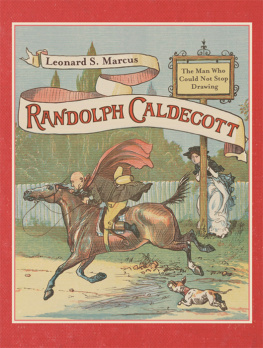
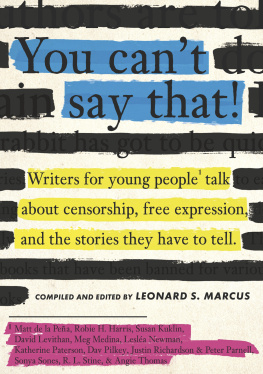
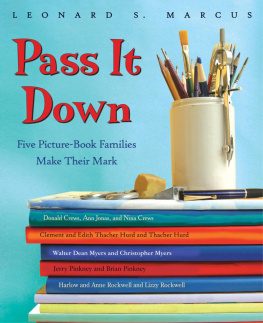

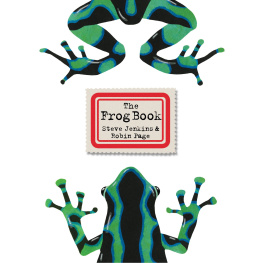
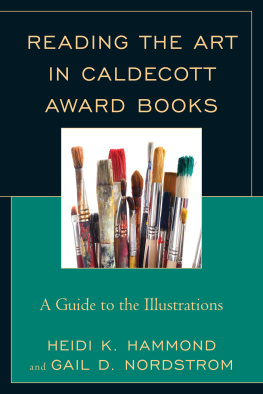
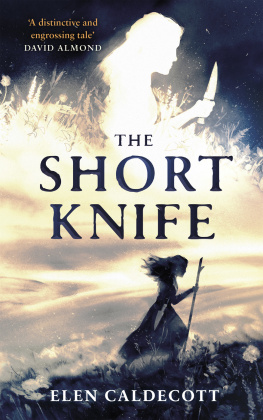
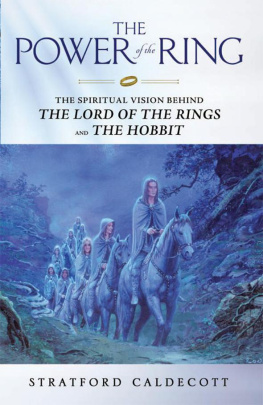

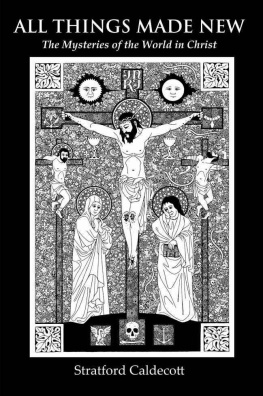
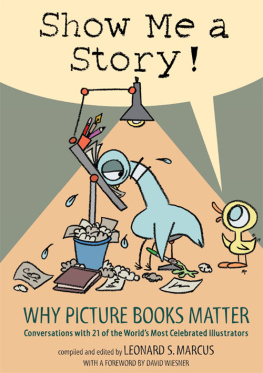







 wo swans at the waters edge trade bewildered glances when they notice a little frog poking his head out of the river. The frog is clutching a papera letter it would seemwhich he reads with a look of total absorption.
wo swans at the waters edge trade bewildered glances when they notice a little frog poking his head out of the river. The frog is clutching a papera letter it would seemwhich he reads with a look of total absorption.


